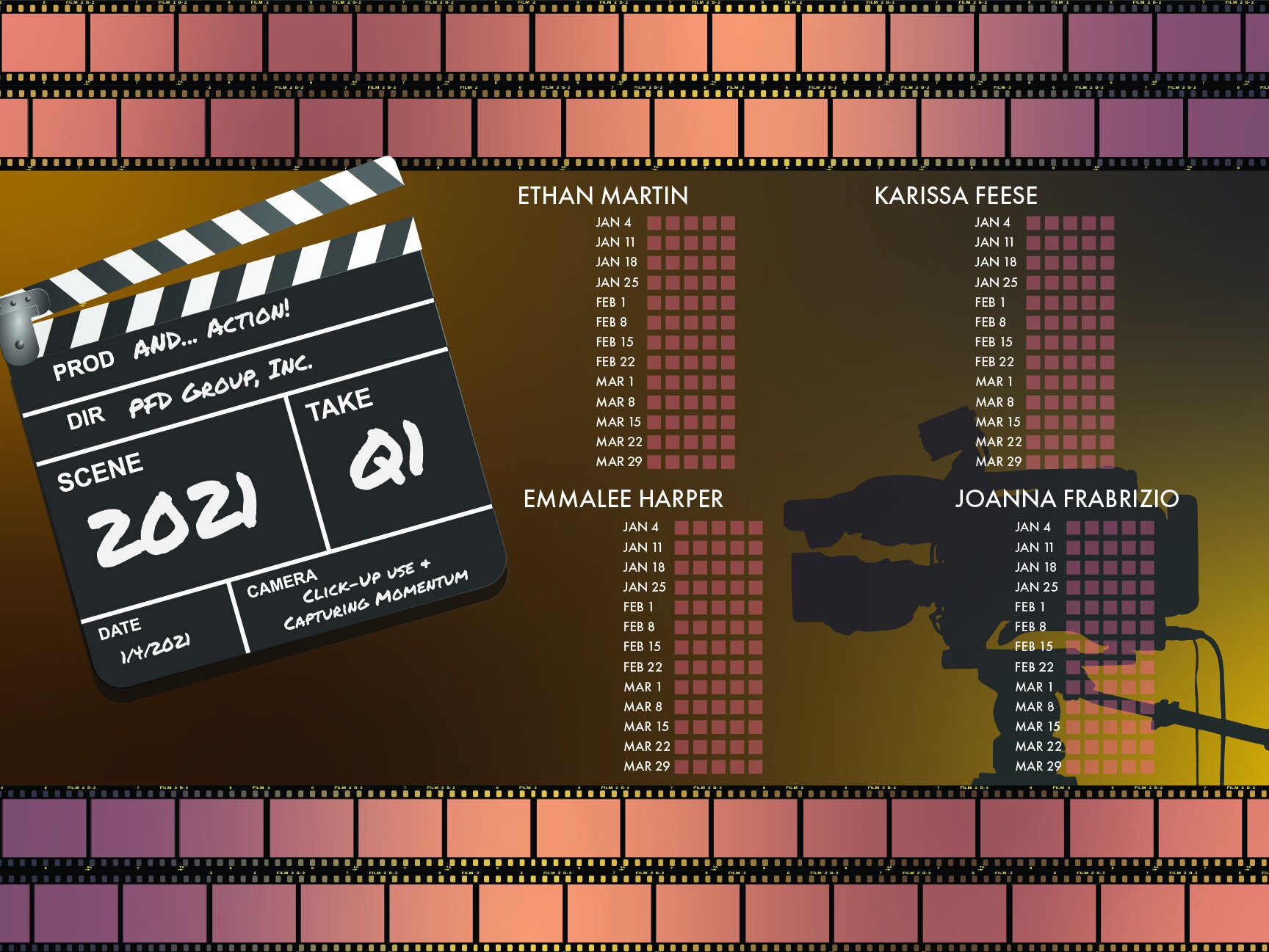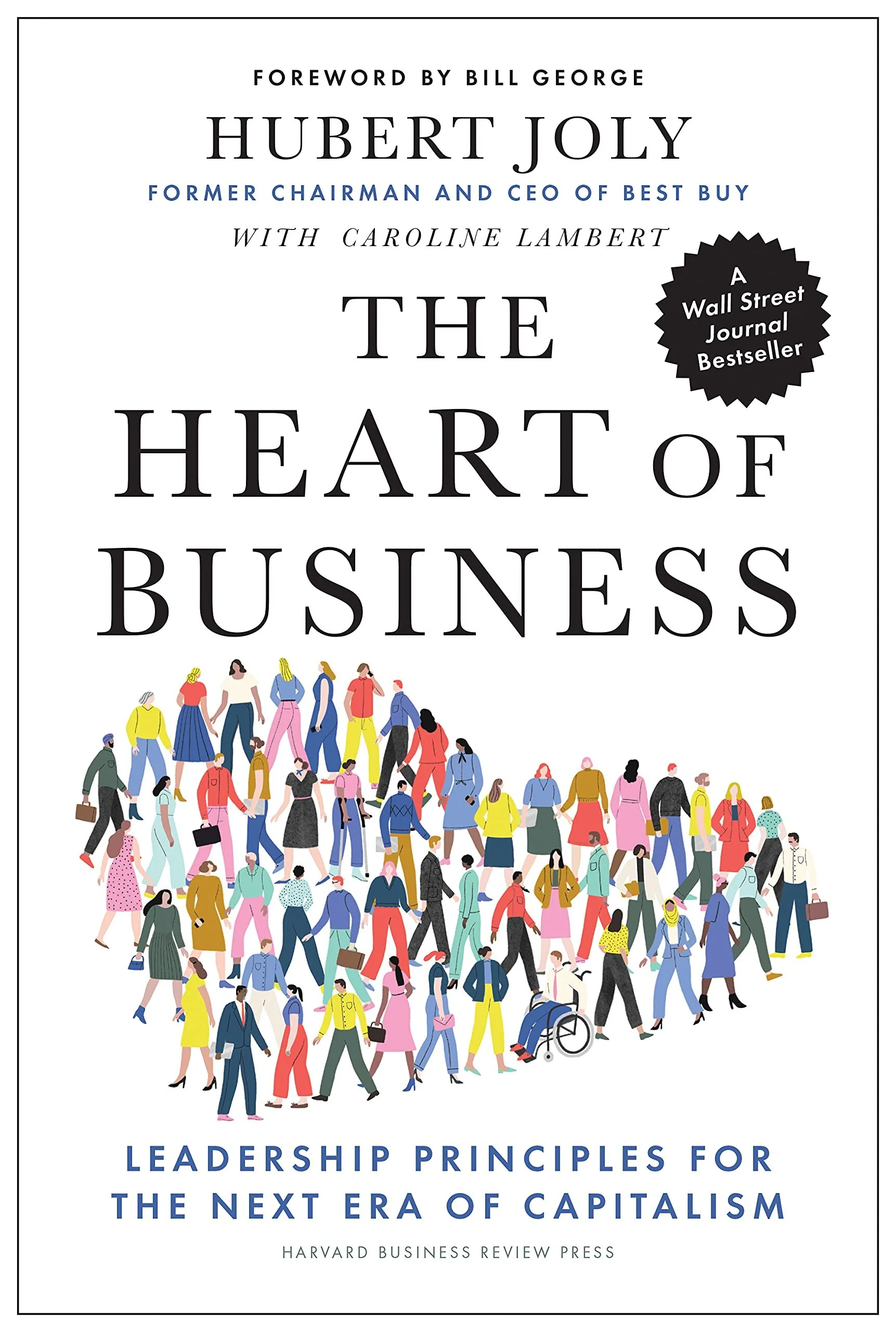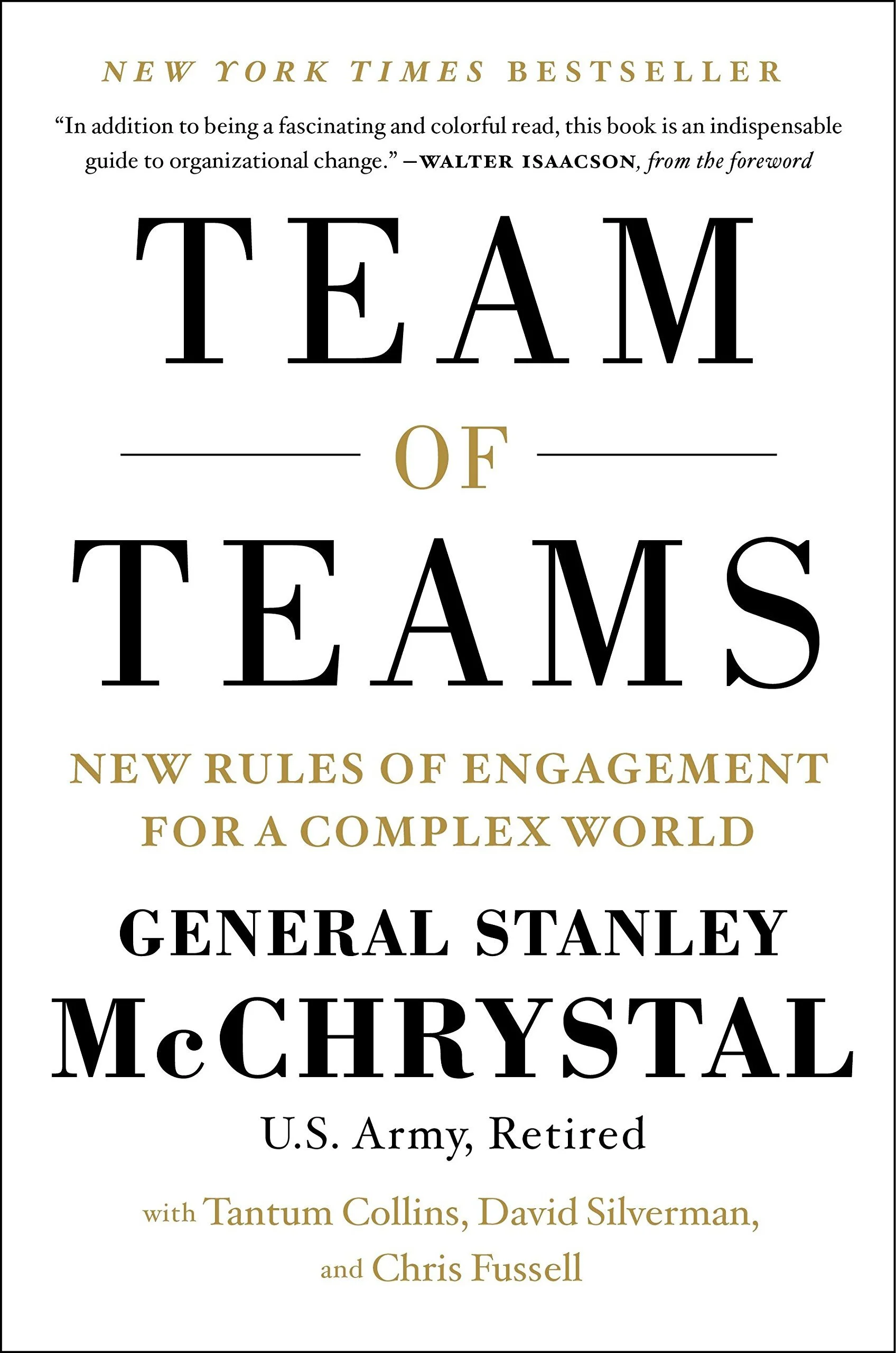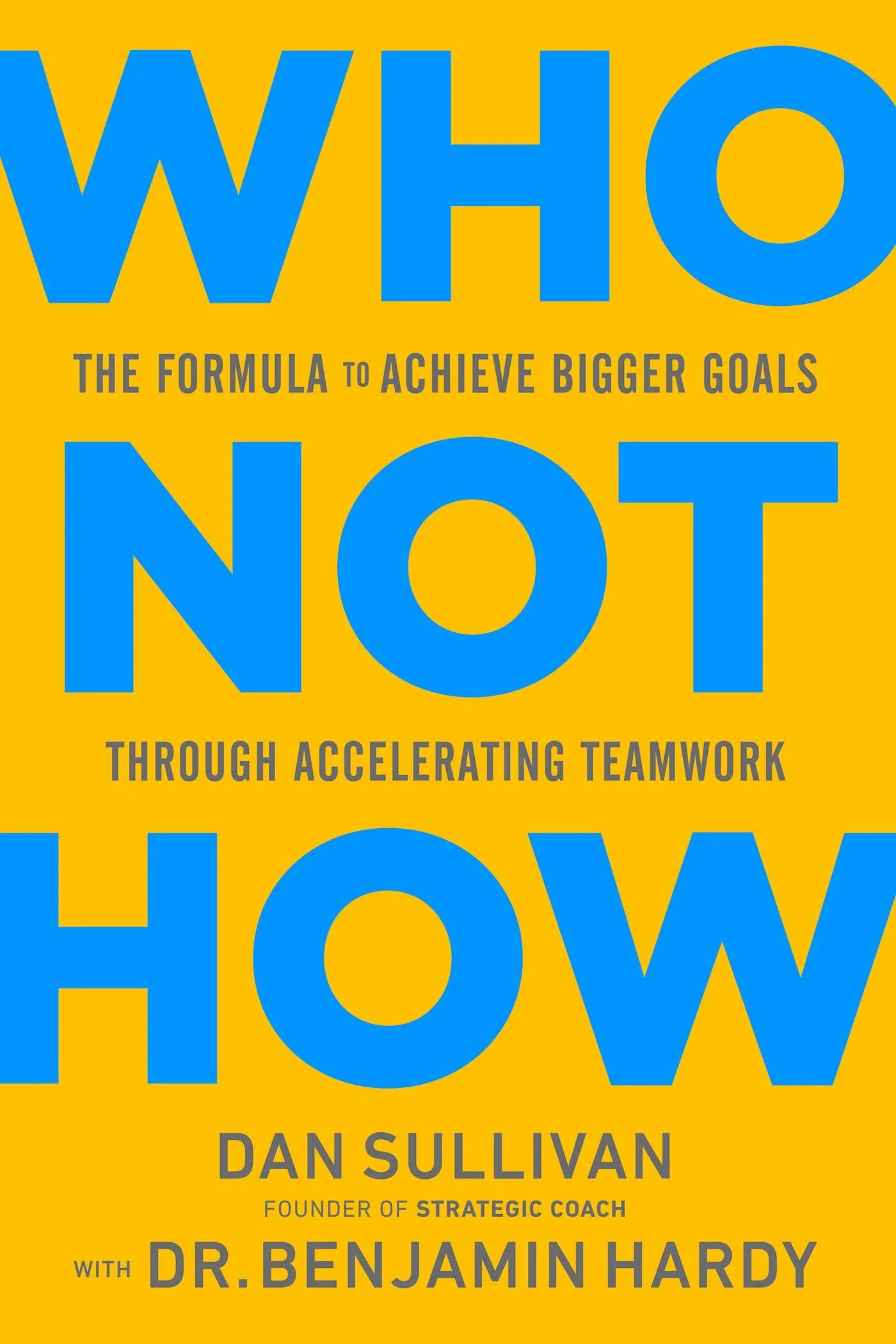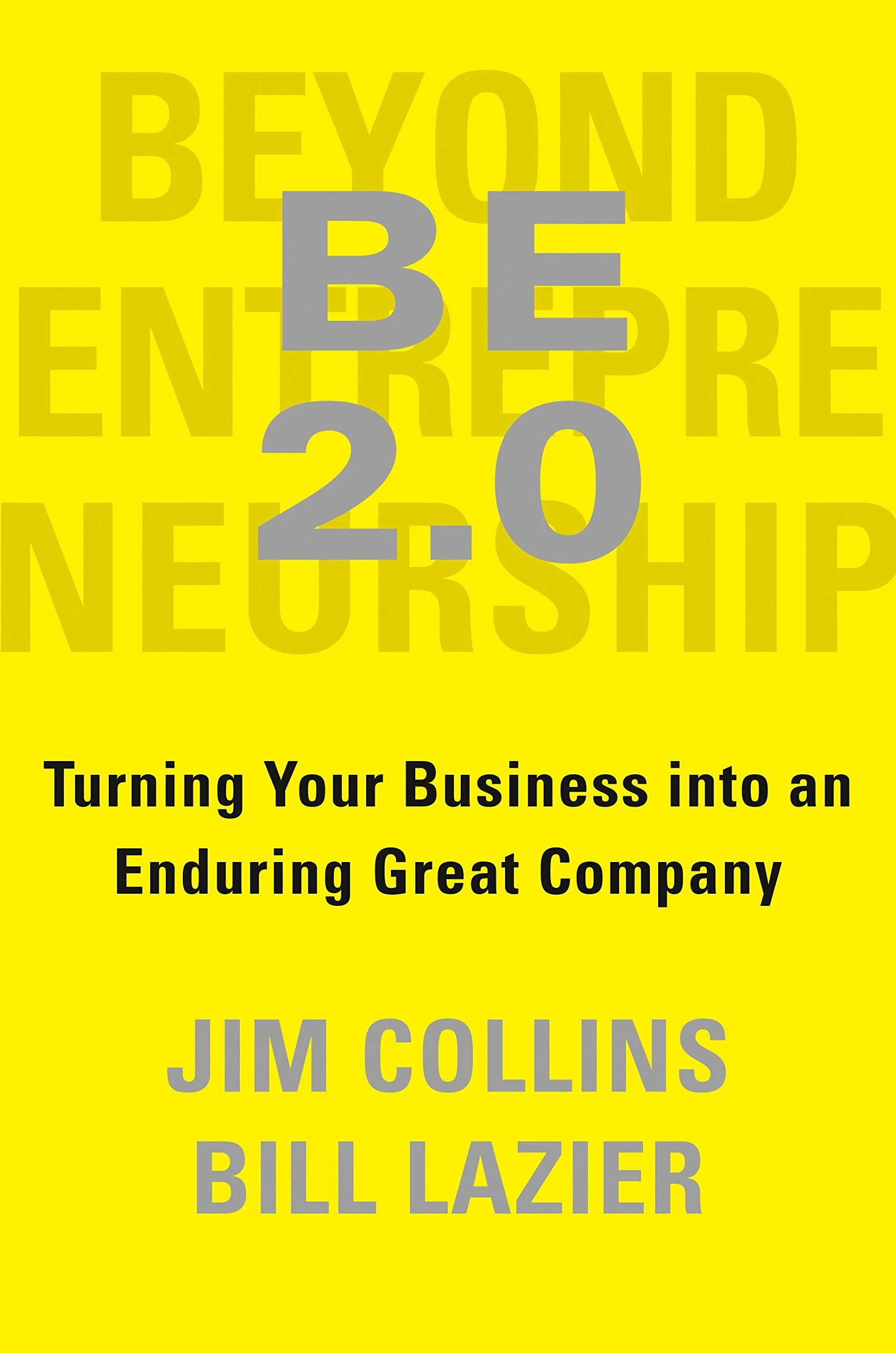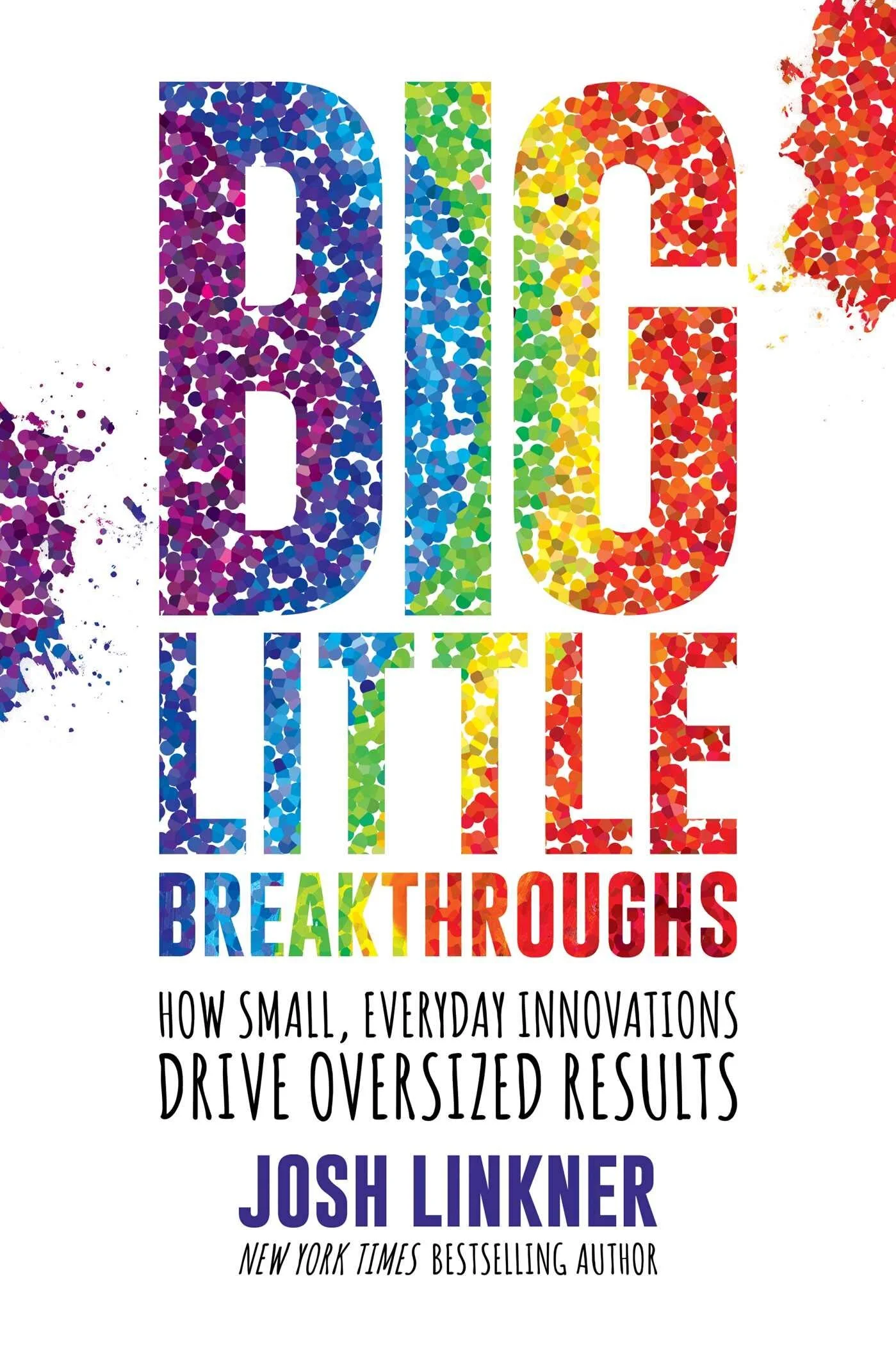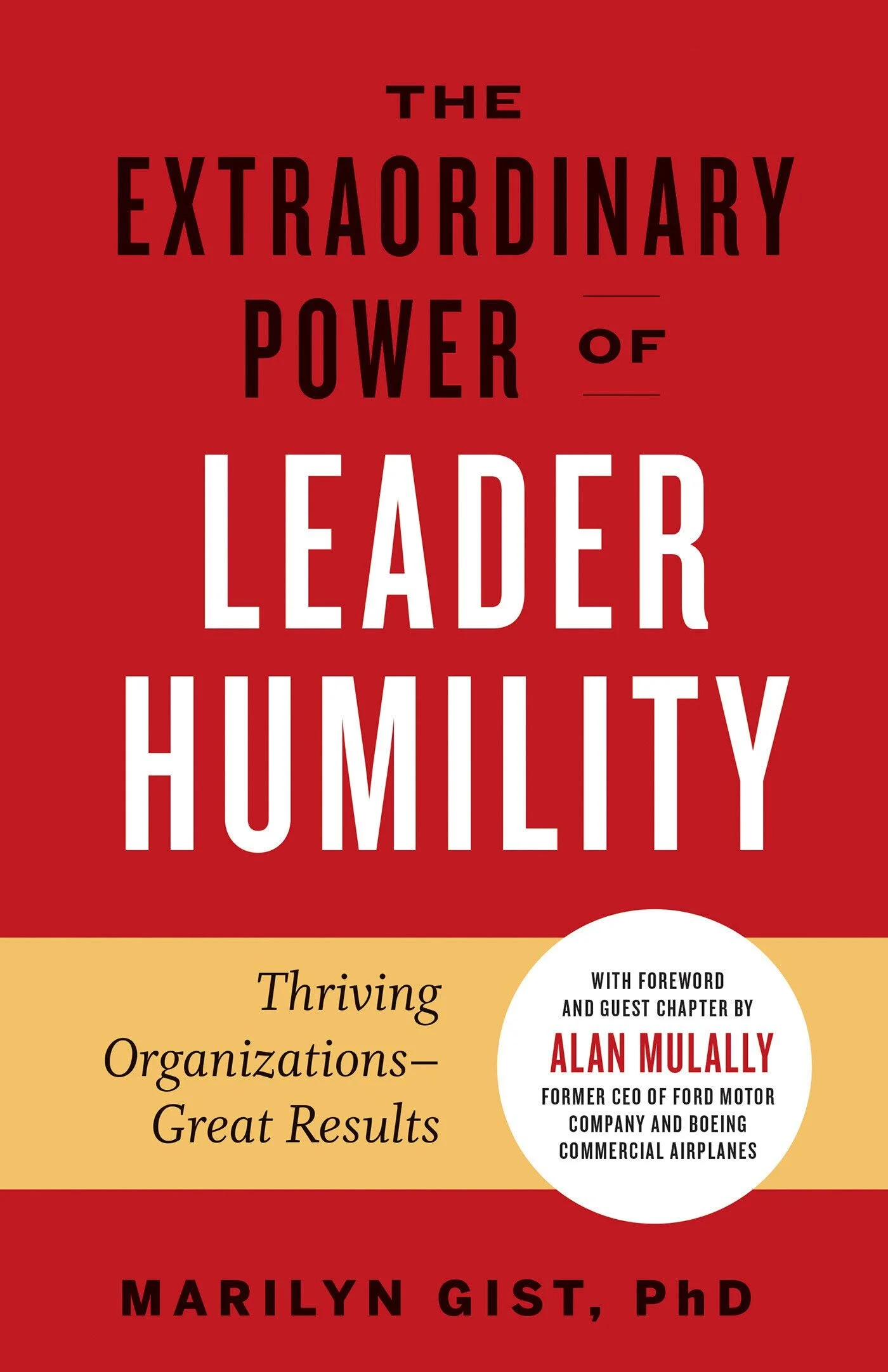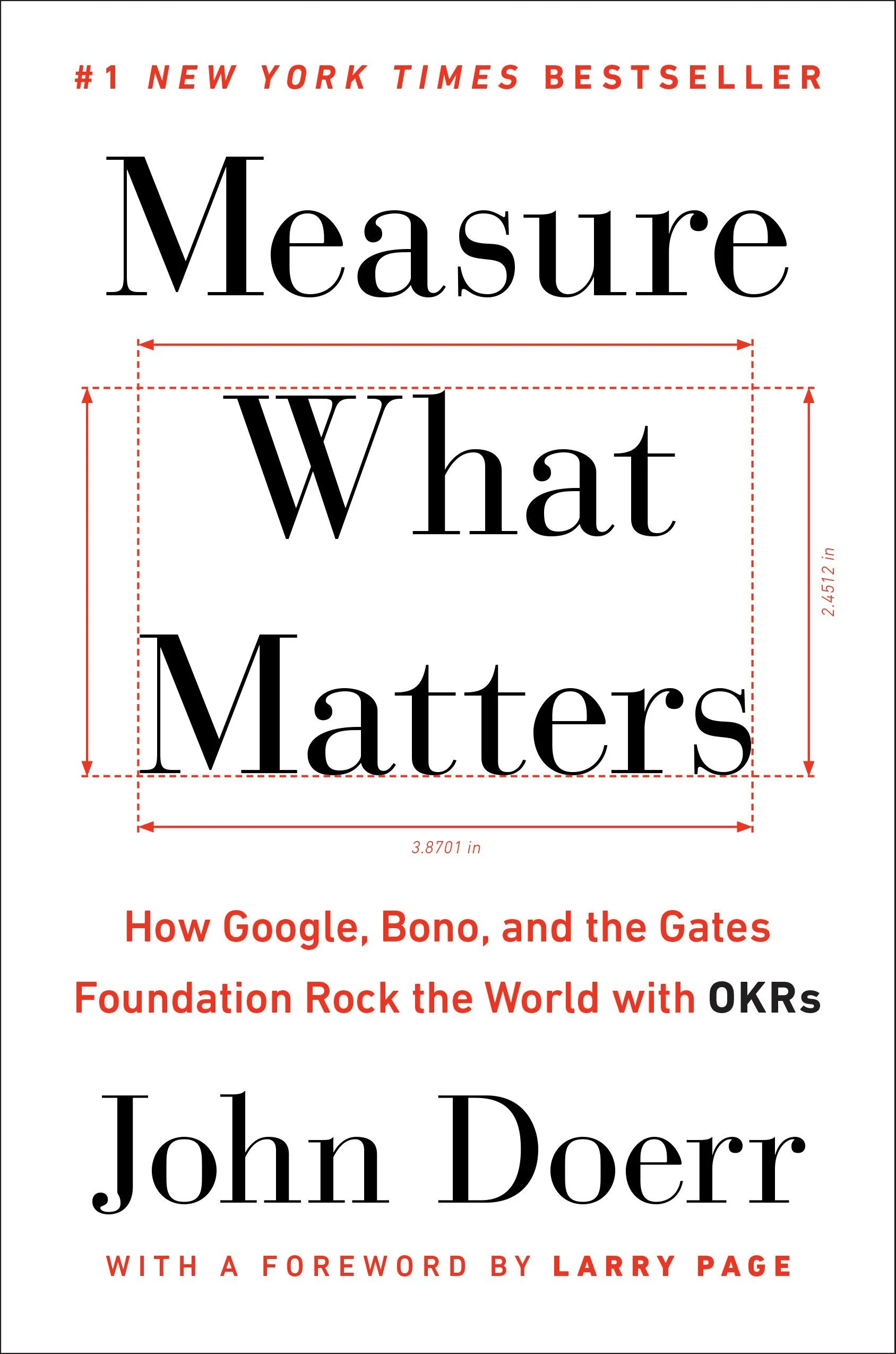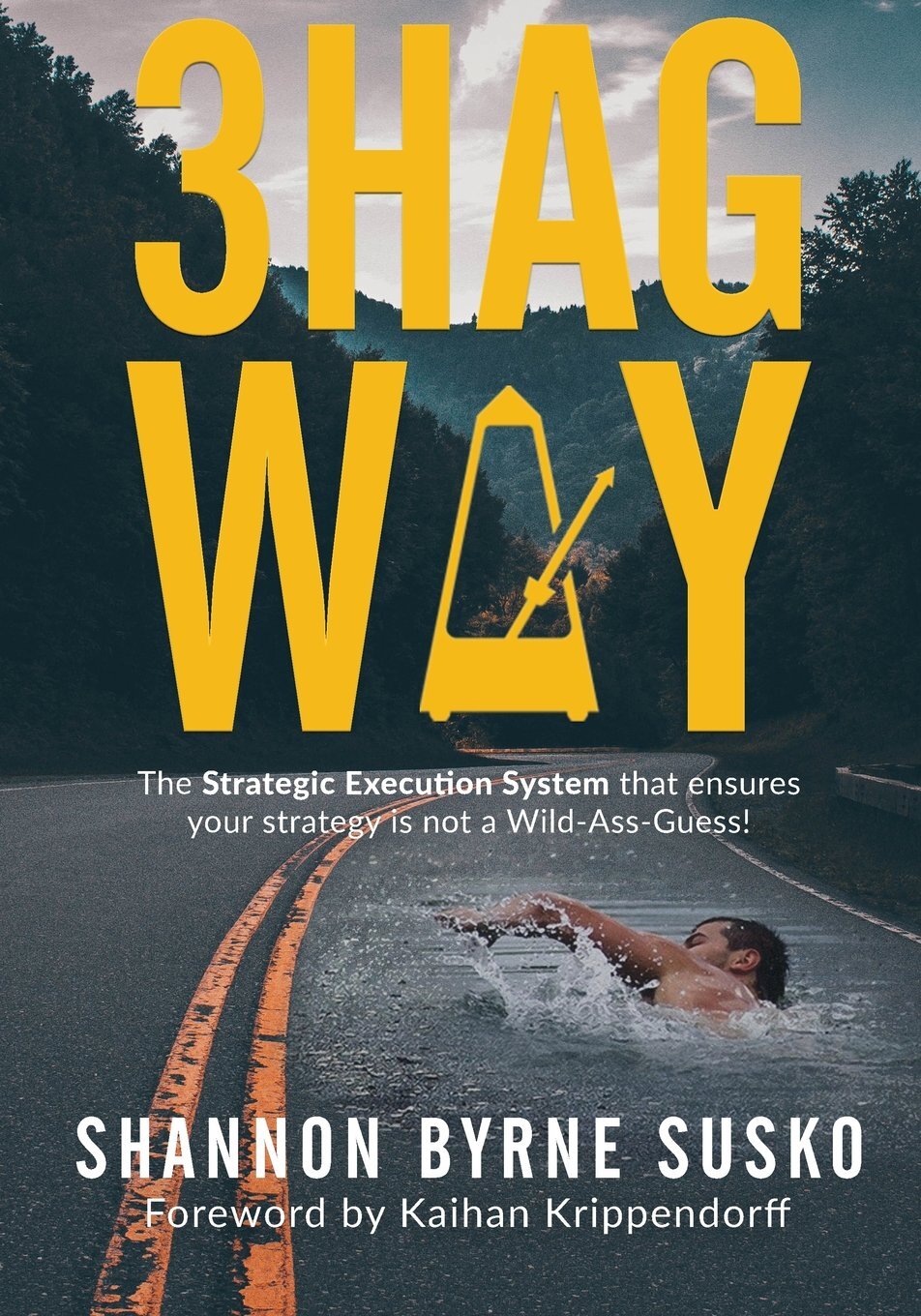As a part of our continued commitment to providing the best resources for leaders to better themselves and thrive, for our October Reading List, we recommend these books: Risk: A User’s Guide - General Stanley McChrystal and Anna Butrico, and We Fed an Island: the True Story of Rebuilding Puerto Rico, One Meal at a Time by José Andrés and Richard Wolffe
Finding Game-Changing Talent with a Creative Sourcing Plan
If there is one thing that I know to be true about business, it is that the people on your senior team and in your company are the deciding factors in whether or not your company can scale effectively. I can not tell you the number of times that one of my clients has brought on a new team member and been absolutely awed by how game-changing that addition became. For example, just recently, one of our clients brought on a new human resources head and was stunned by the positive transformation she generated in the company.
When I tell partners and colleagues about stories such as this, I’m always met with the same question: how exactly can I attract that type of game-changing talent? In the business climate we live in today, attracting top talent can be challenging: now more than ever, individuals have the option to apply to and work for companies all over the world. However, this shouldn’t scare you. With a creative and regimented talent sourcing plan, you too can put your company in a position to attract great talent.
A good creative sourcing plan should leverage three resources: community partnerships, talent recruitment agencies, and being opportunistic:
Community partnerships: Oftentimes amazing talent will be right in your backyard; you just need to know where to look. Community partnerships can be a powerful way to find that talent. Are there local universities, nonprofits organizations or boards that could connect you with potential employees? Once you identify individuals or organizations that may have potential employees, you can begin to build consistent partnerships with them. For example, I used to work closely with a professor at the University of Denver to find interns. This partnership gave me access to students that the professor thought were good fits instead of me trying to go through the school’s career center, which dozens of other companies were doing.
Talent recruitment agencies: Although this isn’t necessarily the most creative, talent recruitment agencies can be helpful. Your time and energy are valuable resources, so if you can afford to spend cash on recruitment agencies, it could be a worthwhile investment.
Being Opportunistic: As a leader, you should always be keeping an eye out for potential talent. What this means is that if you meet someone amazing as you are going through your day-to-day-life, recruit them. You can’t plan to meet people like this, but you should be prepared to. To be prepared, you should be able to communicate your mission, speak to why you provide a valuable experience and have business cards on hand.
These three avenues are each a viable way to find great talent and ones that I have personally used in the past. If you would like to discuss your sourcing plan further, feel free to reach out to me at emartin@pfd-group.com.
Quarterly Themes: Creating alignment and Boosting Team Morale
As we have been working in a pandemic for more than a year, there is one thing that all the leaders I have spoken with have agreed upon: we and our teams are exhausted. I am a big believer in optimism, but I am an equally large proponent of addressing what Admiral James Stockdale calls the “brutal facts of your current reality,” and, in this moment, addressing the brutal facts means recognizing that team morale and alignment may be suffering.
One powerful way to re-inspire your team and bring energy (and fun!) back into your workplace is to announce a quarterly theme that you and your team can rally behind. Quarterly themes are generally created by gathering a representative from each department and/or your leadership team for a quick 45 minute meeting.
In the meeting, you and your team should consider where your company is at, upcoming priorities and future goals. The most important thing to remember while creating this team is that it should create a “win x4;” a win for the company, a win for customers, a win for the employees, and a win for the community. By ensuring that your theme is one that will motivate your employees and create value for customers and community, you will effectively be drawing in a crowd of individuals who will support your work.
As an example, this quarter we at PFD have decided that our quarterly theme would be “Paddle!” We wanted to capture the idea that in order to catch a great wave of change, you have to put in significant effort to ensure that the wave does not pass you by. As a company, we have several key thrusts in the works, which led us to choose a theme that will remind us to keep paddling so that we can catch a wave that will generate enormous benefits for our team and community.
Q3 2021 Theme: Paddle! The Key Thrusts have been generalized so as not to give away our strategy.
If you would like more inspiration on potential themes for our company, check out some of our past themes:
Q2 2020 Theme: “Our Finest Hour”. For this theme, we were in the height of uncertainty with the pandemic, and we were searching for empowerment in our team. We found inspiration from another period of history marked with fear and uncertainty, WWII, and specifically Winston’ Churchill’s “This Was Their Finest Hour” speech. It was because of this speech that we decided to rise to the challenge - making that quarter “Our Finest Hour” - and finding creative ways to positively impact 1,000 lives. If you would like to read more about this theme, check out this blog post here.
Q1 2021 Theme: And… Action! For this quarter, we wanted to inspire our team to be very action-oriented, so to accomplish this end, we had our team track their use and adoption of our new project-management software. By ensuring the team used the project management software, they had a clear means to track progress on their projects, thus inspiring action. There also was a celebratory component, as we also had our team members submit photos of the different things they were doing - both within work and outside of work - to commemorate all that been done during the quarter.
Q3 2020 Theme: Partner Pinball (names removed this blog post). For this theme, we wanted our team members to engage with key partners throughout the quarter to help facilitate a strong launch to a project. A star was added next to the name of each partner engaged, to make sure we kept the focus on partners present and at the forefront. The relationships we have with CEOs and other leaders are critical to our success, so we wanted to focus on treating those partners well for the duration of the quarter.
If you would like more help creating your quarterly theme, I recommend this 9-minute video: Developing a Theme for Your Team.
Recommended Reading: August 2021
As a part of our continued commitment to providing the best resources for leaders to better themselves and thrive, for our August Reading List, we recommend these books: The Heart of Business: Leadership Principles for the Next Era of Capitalism by Hubert Joly with Caroline Lambert, The HP Way: How Bill Hewlett and I Built Our Company by David Packard, and Team of Teams: New Rules of Engagement for a Complex World by Gen. Stanley McChrystal, Tantum Collins, David Silverman, and Chris Fussell.
The Heart of Business: Leadership Principles for the Next Era of Capitalism - Hubert Joly with Caroline Lambert
How to unleash "human magic" and achieve improbable results.
Hubert Joly, former CEO of Best Buy and orchestrator of the retailer's spectacular turnaround, unveils his personal playbook for achieving extraordinary outcomes by putting people and purpose at the heart of business.
Back in 2012, "Everyone thought we were going to die," says Joly. Eight years later, Best Buy was transformed as Joly and his team rebuilt the company into one of the nation's favorite employers, vastly increased customer satisfaction, and dramatically grew Best Buy's stock price. Joly and his team also succeeded in making Best Buy a leader in sustainability and innovation.
In The Heart of Business, Joly shares the philosophy behind the resurgence of Best Buy: pursue a noble purpose, put people at the center of the business, create an environment where every employee can blossom, and treat profit as an outcome, not the goal.
This approach is easy to understand, but putting it into practice is not so easy. It requires radically rethinking how we view work, how we define companies, how we motivate, and how we lead. In this book Joly shares memorable stories, lessons, and practical advice, all drawn from his own personal transformation from a hard-charging McKinsey consultant to a leader who believes in human magic.
The Heart of Business is a timely guide for leaders ready to abandon old paradigms and lead with purpose and humanity. It shows how we can reinvent capitalism so that it contributes to a sustainable future.
The HP Way: How Bill Hewlett and I Built Our Company - David Packard
Much more personal than standard corporate histories, David Packard's The HP Way provides insights into managing and motivating people and inspiration for would–be entrepreneurs. This bestselling classic joins the Collins Business Essentials line–up with a new Note from Steve Jobs.
From a one–car–garage company to a multibillion–dollar industry, the rise of Hewlett–Packard is an extraordinary tale of vision, innovation and hard work. Conceived in 1939, Hewlett–Packard earned success not only as a result of its engineering know–how and cutting–edge product ideas, but also because of the unique management style it developed – a way of doing things called 'the HP way'.
Decades before today's creative management trends, Hewlett–Packard invented such strategies as 'walk–around management', 'flextime', and 'quality cycles'. Always sensitive to the needs of its customers and responsive to employee input, Hewlett–Packard earned massive steady growth that far outshone its competitors' vacillating fortunes, even with radically different products from those responsible for its initial boom.
For entrepreneurs and managers alike, the wisdom found in these pages is invaluable if they want their businesses to gain steady growth and consistent success.
Team of Teams: New Rules of Engagement for a Complex World- Gen. Stanley McChrystal, Tantum Collins, David Silverman, & Chris Fussell
The retired four-star general and best-selling author of My Share of the Task shares a powerful new leadership model
Former general Stanley McChrystal held a key position for much of the War on Terror, as head of the Joint Special Operations Command. In Iraq he found that despite the vastly superior resources, manpower, and training of the US military, Al Qaeda had an advantage because of its structure as a loose network of small, independent cells. Those cells wreaked havoc by always staying one step ahead, sharing knowledge with each other via high-tech communications.
To defeat such an agile enemy, JSOC had to change its focus from efficiency to adaptability. McChrystal led the transformation of his forces into a network that combined robust centralized communication ("shared consciousness") with decentralized managerial authority ("empowered execution").
Now he shows not only how the military made that transition but also how similar shifts are possible in all kinds of organizations, from large companies to startups to charities to government agencies. In a world of rapid change, the best organizations think and act like a team of teams, embracing small groups that combine the freedom to experiment with a relentless drive to share what they've learned.
McChrystal and his colleagues explain their process for helping organizations embrace this model. They also share fascinating research and examples from settings as diverse as emergency rooms and NASA's mission control center.
Recommended Reading: July 2021
As a part of our continued commitment to providing the best resources for leaders to better themselves and thrive, for our July Reading List, we recommend these books: Who Not How: The Formula to Achieve Bigger Goals by Dan Sullivan with Dr. Benjamin Hardy, and BE 2.0 (Beyond Entrepreneurship 2.0): Turning Your Business into an Enduring Great Company by Jim Collins.
Who Not How: The Formula to Achieve Bigger Goals - Dan Sullivan with Dr. Benjamin Hardy
The world's foremost entrepreneurial coach shows you how to make a mindset shift that opens the door to explosive growth and limitless possibility--in your business and your life.
Have you ever had a new idea or a goal that excites you... but not enough time to execute it? What about a goal you really want to accomplish...but can't because instead of taking action, you procrastinate? Do you feel like the only way things are going to get done is if you do them? But what if it wasn't that way? What if you had a team of people around you that helped you accomplish your goals (while you helped them accomplish theirs)?
When we want something done, we've been trained to ask ourselves: "How can I do this?" Well, there is a better question to ask. One that unlocks a whole new world of ease and accomplishment. Expert coach Dan Sullivan knows the question we should ask instead: "Who can do this for me?"
This may seem simple. And it is. But don't let the lack of complexity fool you. By mastering this question, you will quickly learn how billionaires and successful entrepreneurs like Dan build incredible businesses and personal freedom.
This book will teach you how to make this essential paradigm-shift so you can:
Build a successful business effectively while not killing yourself
Immediately free-up 1,000+ hours of work that you shouldn't be doing anyway
Bypass the typical scarcity and decline of aging and other societal norms
Increase your vision in all areas of life and build teams of WHOs to support you in that vision
Never be limited in your goals and ambitions again
Expand your abundance of wealth, innovation, relationships, and joy
Build a life where everything you do is your choice--how you spend your time, how much money you make, the quality of your relationships, and the type of work you do
Making this shift involves retraining your brain to stop limiting your potential based on what you solely can do and instead focus on the nearly infinite and endless connections between yourself and other people as well as the limitless transformation possible through those connections.
BE 2.0 (Beyond Entrepreneurship 2.0): Turning Your Business into an Enduring Great Company - Jim Collins
From Jim Collins, the most influential business thinker of our era, comes an ambitious upgrade of his classic, Beyond Entrepreneurship, that includes all-new findings and world-changing insights.
What's the roadmap to create a company that not only survives its infancy but thrives, changing the world for decades to come?
Nine years before the publication of his epochal bestseller Good to Great, Jim Collins and his mentor, Bill Lazier, answered this question in their bestselling book, Beyond Entrepreneurship.
Beyond Entrepreneurship left a definitive mark on the business community, influencing the young pioneers who were, at that time, creating the technology revolution that was birthing in Silicon Valley. Decades later, successive generations of entrepreneurs still turn to the strategies outlined in Beyond Entrepreneurship to answer the most pressing business questions.
BE 2.0 is a new and improved version of the book that Jim Collins and Bill Lazier wrote years ago. In BE 2.0, Jim Collins honors his mentor, Bill Lazier, who passed away in 2005, and reexamines the original text of Beyond Entrepreneurship with his 2020 perspective.
The book includes the original text of Beyond Entrepreneurship, as well as four new chapters and fifteen new essays. BE 2.0 pulls together the key concepts across Collins' thirty years of research into one integrated framework called The Map. The result is a singular reading experience, which presents a unified vision of company creation that will fascinate not only Jim's millions of dedicated readers worldwide, but also introduce a new generation to his remarkable work.
Recommended Reading: June 2021
As a part of our continued commitment to providing the best resources for leaders to better themselves and thrive, for our June Reading List, we recommend these books: Metronomics: One United System to Grow Up Your Team, Company, and Life by Shannon Susko Play Bigger: How Pirates, Dreamers, and Innovators Create and Dominate Markets by Al Ramadan, Dave Peterson, Christopher Lochhead, & Kevin Maney, and A Better Life for Their Children: Julius Rosenwald, Booker T. Washington, and the 4,978 Schools That Changed America by Andrew Feiler (Author), John Lewis (Foreword), Jeanne Cyriaque (Contributor), Brent Leggs (Contributor).
Metronomics: One United System to Grow Up Your Team, Company, and Life - Shannon Susko
As a business leader, you’ve read dozens of books by the top thought leaders, learning from their research, principles, and tools. Each book dives deep into a specific area of expertise—strategy, execution, cash, people, culture, and leadership. All share powerful concepts on what to do to grow your business. But how do you efficiently unite these tools into a regimen that works for not just one specific area of your business, but for your entire team, company, and life?
Metronomics unites top business thought leadership with over twenty years of proven practical experience. The outcome is a prescriptive progressive growth system for every business. In this book, you’ll learn how to build a high-performing business team that achieves superior results with ease, speed, and confidence. You’ll learn the practical progression that ensures your team is fiercely connected to your strategic execution system. No matter what level you and your team are at right now, Metronomics will meet you where you are—and grow with you to the next level and beyond.
The best-kept business secret for the past twenty years, Metronomics will allow your company to win your business Olympics every year, and as a leader, it will set you free.
Play Bigger: How Pirates, Dreamers, and Innovators Create and Dominate Markets - Al Ramadan, Dave Peterson, Christopher Lochhead, & Kevin Maney
The founders of a respected Silicon Valley advisory firm study legendary category-creating companies and reveal a groundbreaking discipline called category design.
Winning today isn’t about beating the competition at the old game. It’s about inventing a whole new game—defining a new market category, developing it, and dominating it over time. You can’t build a legendary company without building a legendary category. If you think that having the best product is all it takes to win, you’re going to lose.
In this farsighted, pioneering guide, the founders of Silicon Valley advisory firm Play Bigger rely on data analysis and interviews to understand the inner workings of “category kings”— companies such as Amazon, Salesforce, Uber, and IKEA—that give us new ways of living, thinking or doing business, often solving problems we didn’t know we had.
In Play Bigger, the authors assemble their findings to introduce the new discipline of category design. By applying category design, companies can create new demand where none existed, conditioning customers’ brains so they change their expectations and buying habits. While this discipline defines the tech industry, it applies to every kind of industry and even to personal careers.
Crossing the Chasm revolutionized how we think about new products in an existing market. The Innovator’s Dilemma taught us about disrupting an aging market. Now, Play Bigger is transforming business once again, showing us how to create the market itself.
A Better Life for Their Children: Julius Rosenwald, Booker T. Washington, and the 4,978 Schools That Changed America - Andrew Feiler (Author), John Lewis (Foreword), Jeanne Cyriaque (Contributor), Brent Leggs (Contributor)
A Sarah Mills Hodge Fund publication
Born to Jewish immigrants, Julius Rosenwald rose to lead Sears, Roebuck & Company and turn it into the world’s largest retailer. Born into slavery, Booker T. Washington became the founding principal of Tuskegee Institute. In 1912 the two men launched an ambitious program to partner with black communities across the segregated South to build public schools for African American children. This watershed moment in the history of philanthropy―one of the earliest collaborations between Jews and African Americans―drove dramatic improvement in African American educational attainment and fostered the generation who became the leaders and foot soldiers of the civil rights movement.
Of the original 4,978 Rosenwald schools built between 1917 and 1937 across fifteen southern and border states, only about 500 survive. While some have been repurposed and a handful remain active schools, many remain unrestored and at risk of collapse. To tell this story visually, Andrew Feiler drove more than twenty-five thousand miles, photographed 105 schools, and interviewed dozens of former students, teachers, preservationists, and community leaders in all fifteen of the program states.
A Better Life for their Children includes eighty-five duotone images that capture interiors and exteriors, schools restored and yet-to-be restored, and portraits of people with unique, compelling connections to these schools. Brief narratives written by Feiler accompany each photograph, telling the stories of Rosenwald schools’ connections to the Trail of Tears, the Great Migration, the Tuskegee Airmen, Brown v. Board of Education, embezzlement, murder, and more.
Beyond the photographic documentation, A Better Life for Their Children includes essays from three prominent voices. Congressman John Lewis, who attended a Rosenwald school in Alabama, provides an introduction; preservationist Jeanne Cyriaque has penned a history of the Rosenwald program; and Brent Leggs, director of African American Cultural Heritage at the National Trust for Historic Preservation, has written a plea for preservation that serves as an afterword.
The Ethics of Hiring Well
A teammate (right) and me (left) at Ethics Bowl at the Regional High School Championships, 2016
In college, my friends used to tease me for being an ethics nerd. My love for ethics began back in high school, where I was a part of my school’s inaugural ethics bowl team – even placing at our regional competition in Utah. After high school, I reached out to the staff advisor to join my collegiate ethics bowl team before I even arrived on campus. In ethics bowl, we discussed a multitude of topics, from the ethicality of using beta testing when developing software in self-driving cars, to the treatment of children born with anencephaly, even to the ethics of colonizing Mars. Being a part of these teams and these conversations profoundly shaped my outlook on my life and career and has jumpstarted my curiosity of how to live out as an ethical business leader.
In fact, the ethics of business decisions have been a hot topic on everyone’s mind lately – from discussions on stakeholder theory, to the triple bottom line, to the conscious capitalism movement. Within these broader movements towards business ethics, there are countless topics within day-to-day business activities that need to be explored from an ethical standpoint. One such topic is hiring.
What does it mean to hire well? What are the impacts of hiring well?
Hiring well doesn’t necessarily mean you hire the top graduates from Ivy League schools, nor does it mean requiring experience for entry level positions. What hiring well means is that you answer “yes” to this one question: Knowing what you know now (after a person has been working at your company) would you enthusiastically rehire them? These applicants can come from diverse backgrounds, but they must be a core value fit and do their job well. If someone isn’t a good fit for their job, you can create stress for yourself and other employees who will need to pick up the slack, as well as lost revenue. If someone is not a good core value fit, you run the risk of devaluing your culture, creating frustration, and even driving away some of your employees who are good fits.
With so much on the line, hiring well is extraordinarily important, both for your business success and to better the quality of life for your employees. At PFD, we recommend the Topgrading Methodology for hiring. The idea behind Topgrading is simple. Most companies hire fast and fire slow, and by doing this, they are hiring and keeping people in their organizations who they wouldn’t “rehire” if given the opportunity. Topgrading adds rigor – it allows those who are making the hiring decisions to truly take their time and consider their candidates. By adding this rigor, we are ensuring that we truly are hiring the right people in the right roles – vastly increasing the success rate hiring from 50% to 90%. We recommend reading the book Topgrading by Brad and Geoff Smart for more information on this process.
We’ve talked about the impacts of hiring well, and the process we recommend using for hiring. Now, for those of you who are ethics nerds like me, let’s discuss some ethical theories as applied to hiring.
Utilitarianism
Quite simply, Utilitarianism asks: what creates the greatest good for the most people, while minimizing suffering? It is also called Consequentialism, because it looks at the consequences of an action to determine its morality.
Under a utilitarian lens, it is a moral imperative to hire well. Taking time to hire well – to have the right people who fit the culture and excel at their jobs – will result in the greatest good for the most amount of people, both in the company and out. As we have described above, hiring poorly can result in stress and frustration to the employees, thus causing harm. Further, assuming the company has some involvement in the community, a mishire can result in lost revenue, thus reducing the number of resources the business has to give back to causes. Conversely, a good hire who fits the culture can add to the quality of life of fellow employees, and can increase our resources to give back to our communities.
Kantianism
According to Kantianism, determining morality means asking ourselves, “if we were to imagine a world where everyone was to do this action, would it still be viable?” If the action is not viable if everyone were to do it, we have a duty to behave differently. For example, if a manufacturing company were heavily polluting a local river, their actions would be unethical, because everyone polluting a river would make the environment surrounding uninhabitable. Additionally, under this ethical theory, we have a moral duty to treat people with respect, because they are rational thinkers, and never as a means to an end. So, in this theory, it would be unethical for an employer to hire somebody and intentionally grossly underpay their starting salary to save money. That would not be treating them with respect to themselves as rational actors, and they would be using that employee as a means to an end (saving cash).
Under a Kantian lens, it is also an ethical duty of ours to take the time to hire well. We might know a great salesperson who could bring some deals to the company, but doesn’t fit the core values, and according to this theory, we shouldn’t hire them. This is because making exceptions to our hiring process would undermine the duty we had to our other employees, who both fit the culture and do well in their roles. Further, to hire someone into a position or culture that they cannot do well in, is not respectful to them or their time that they spent with you at your company.
Ethics of Care
Contrasted with the first two theories, this third theory holds that morality is centered on interpersonal relationships, as well as benevolence (or care) is a virtue. Under this theory, the interpersonal relationships that you have with people matter. For example, if you have a long-standing relationship with a supplier (assuming this supplier also acts ethically), this theory contends that you should not switch suppliers just to save a couple of bucks on the cost of goods sold.
Under an ethics of care lens, it is especially important to take the time and effort to hire candidates who fit the culture, and who excel in their jobs. When we hire people, we are making a commitment to their longer-term success. When we hire someone, we can build relationships with them over time, and to create a culture where our employees’ relationships with one another can thrive. To mishire someone can dissolve culture and trust quickly, thereby eroding these relationships.
Of course, we can’t always get the right hires in the right roles 100% of the time, but it is important that we take the time to create hiring strategies and processes in place to maximize our chances of success. If you would like to talk about your hiring process and strategy, we would be happy to talk with you.
Recommended Reading: May 2021
As a part of our continued commitment to providing the best resources for leaders to better themselves and thrive, for our May Reading List, we recommend these two books: Big Little Breakthroughs: How Small, Everyday Innovations Drive Oversized Results by Josh Linkner, and The Extraordinary Power of Leader Humility: Thriving Organizations – Great Results by Marilyn Gist, PhD.
Big Little Breakthroughs: How Small, Everyday Innovations Drive Oversized Results - Josh Linkner
A surprisingly simple approach to help everyday people become everyday innovators.
The pressure to generate big ideas can feel overwhelming. We know that bold innovations are critical in these disruptive and competitive times, but when it comes to breakthrough thinking, we often freeze up.
Instead of shooting for a $10-billion payday or a Nobel Prize, the most prolific innovators focus on Big Little Breakthroughs—small creative acts that unlock massive rewards over time. By cultivating daily micro-innovations, individuals and organizations are better equipped to tackle tough challenges and seize transformational opportunities.
How did a convicted drug dealer launch and scale a massively successful fitness company? What core mindset drove LEGO to become the largest toy company in the world? How did a Pakistani couple challenge the global athletic shoe industry? What simple habits led Lady Gaga, Banksy, and Lin-Manuel Miranda to their remarkable success?
Big Little Breakthroughs isn’t just for propeller-head inventors, fancy-pants CEOs, or hoodie-donning tech billionaires. Rather, it’s a surpassingly simple system to help everyday people become everyday innovators.
The Extraordinary Power of Leader Humility: Thriving Organizations – Great Results - Marilyn Gist, PhD
“This inspiring book belongs on the desk of every CEO and politician. With eye-opening case studies and recommended behaviors in every chapter, it's an indispensable user guide for servant leaders.”
—Ken Blanchard, coauthor of The New One Minute Manager and coeditor of
Servant Leadership in Action
On the most fundamental level, leaders must bring divergent groups together and forge a consensus on a path forward. But what makes that possible? Humility—a deep regard for the dignity of others—is the key, says distinguished leadership educator Marilyn Gist.
Leadership is a relationship, and humility is the foundation for all healthy relationships. Leader humility can increase engagement and retention. It inspires and motivates. Gist offers a model of leader humility derived from three questions people ask of their leaders: Who are you? Where are we going? Do you see me? She explores each of these questions in depth, as well as the six key qualities of leader humility: a balanced ego, integrity, a compelling vision, ethical strategies, generous inclusion, and a developmental focus.
Much of this book is based on Gist's interviews with a dozen distinguished leaders of organizations such as the Mayo Clinic, Costco, REI, Alaska Airlines, Starbucks, and others. And the foreword and a guest chapter are written by Alan Mulally, the legendary leader who brought Ford back from the brink of bankruptcy after the 2008 financial collapse and whose work is an exemplar of leader humility.
Recommended Reading: April 2021
As a part of our continued commitment to providing the best resources for leaders to better themselves and thrive, for our April Reading List, we recommend these three books: Unreasonable Success and How to Achieve It by Richard Koch, Simple Numbers, Straight Talk, Big Profits!: 4 Keys to Unlock Your Business Potential by Greg Crabtree, and Measure What Matters: How Google, Bono, and the Gates Foundation Rock the World with OKRs by John Doerr.
Unreasonable Success and How to Achieve It - Richard Koch
Can We Map Success?
Successful people typically don’t plan their success. Instead they develop a unique philosophy or attitude that works for them. They stumble across strategies which are shortcuts to success, and latch onto them. Events hand them opportunities they could not have anticipated. Often their peers with equal or greater talent fail while they succeed. It is too easy to attribute success to inherent, unstoppable genius.
Bestselling author and serial entrepreneur Richard Koch charts a map of success, identifying the nine key attitudes and strategies can propel anyone to new heights of accomplishment:
Self-belief
Olympian Expectations
Transforming Experiences
One Breakthrough Achievement
Make Your Own Trail
Find and Drive Your Personal Vehicle
Thrive on Setbacks
Acquire Unique Intuition
Distort Reality
With this book, you can embark on a journey towards a new, unreasonably successful future.
Simple Numbers, Straight Talk, Big Profits!: 4 Keys to Unlock Your Business Potential - Greg Crabtree
Simple Numbers can guide you to increased business profitability!
Take the mystery out of small business finance with this no-frills guide to understanding the numbers that will guide your business out of any financial black hole. Author Greg Crabtree, a successful accountant, small business advisor, and popular presenter, shows you how to use your firm's key financial indicators as a basis for smart business decisions as you grow your firm from startup to $5 million (and, more!) in annual revenue.
Jargon free, and presented in an easy-to-follow, step-by-step format, with plenty of real-world examples, Crabtree's down-to-earth discussion highlights the most common financial errors committed by small businesses, and how to avoid them. You'll be fascinated to learn:
Why your numbers are lying to you (and why you are the cause!)
How labor productivity is the key to profitability and simplifying human resource decisions
Why the amount of tax you pay is your #1 key performance indicator
Take advantage of Crabtree's years of experience teaching clients how to build successful businesses by ''seeing beyond numbers'' with this step-by-step guide to increasing your businesses profitability.
Measure What Matters: How Google, Bono, and the Gates Foundation Rock the World with OKRs - John Doerr
In this #1 New York Times Bestseller, legendary venture capitalist John Doerr reveals how the goal-setting system of Objectives and Key Results (OKRs) has helped tech giants from Intel to Google achieve explosive growth—and how it can help any organization thrive.
In the fall of 1999, John Doerr met with the founders of a start-up whom he'd just given $12.5 million, the biggest investment of his career. Larry Page and Sergey Brin had amazing technology, entrepreneurial energy, and sky-high ambitions, but no real business plan. For Google to change the world (or even to survive), Page and Brin had to learn how to make tough choices on priorities while keeping their team on track. They'd have to know when to pull the plug on losing propositions, to fail fast. And they needed timely, relevant data to track their progress—to measure what mattered.
Doerr taught them about a proven approach to operating excellence: Objectives and Key Results. He had first discovered OKRs in the 1970s as an engineer at Intel, where the legendary Andy Grove ("the greatest manager of his or any era") drove the best-run company Doerr had ever seen. Later, as a venture capitalist, Doerr shared Grove's brainchild with more than fifty companies. Wherever the process was faithfully practiced, it worked.
In this goal-setting system, objectives define what we seek to achieve; key results are how those top-priority goals will be attained with specific, measurable actions within a set time frame. Everyone's goals, from entry level to CEO, are transparent to the entire organization.
The benefits are profound. OKRs surface an organization's most important work. They focus effort and foster coordination. They keep employees on track. They link objectives across silos to unify and strengthen the entire company. Along the way, OKRs enhance workplace satisfaction and boost retention.
In Measure What Matters, Doerr shares a broad range of first-person, behind-the-scenes case studies, with narrators including Bono and Bill Gates, to demonstrate the focus, agility, and explosive growth that OKRs have spurred at so many great organizations. This book will help a new generation of leaders capture the same magic.
Recommended Reading: March 2021
As a part of our continued commitment to providing the best resources for leaders to better themselves and thrive, for our March Reading List, we recommend these two books: Scaling Up: How a Few Companies Make It...and Why the Rest Don't (Rockefeller Habits 2.0) by Verne Harnish and 3HAG WAY: The Strategic Execution System that ensures your strategy is not a Wild-Ass-Guess! by Shannon Byrne Susko.
Our theme this month: getting back to the basics.
We know 2020 and the beginning of 2021 has been challenging. We firmly believe that the tools and wisdom found in these books will help us to not only get through the last months of the pandemic, but to also take advantage of the ample opportunities in front of us so we can effectively scale our companies again.
Scaling Up: How a Few Companies Make It...and Why the Rest Don't (Rockefeller Habits 2.0) - Verne Harnish
This book was the winner of the International Book Awards for General Business and the winner of the Readers' Favorite International Book Award for Non-Fiction Business
It’s been over a decade since Verne Harnish’s best-selling book Mastering the Rockefeller Habits was first released. Scaling Up (Rockefeller Habits 2.0) is the first major revision of this business classic which details practical tools and techniques for building an industry-dominating business. This book is written so everyone ― from frontline employees to senior executives ― can get aligned in contributing to the growth of a firm. Scaling Up focuses on the four major decision areas every company must get right: People, Strategy, Execution, and Cash. The book includes a series of new one-page tools including the updated One-Page Strategic Plan and the Rockefeller Habits ChecklistTM, which more than 40,000 firms around the globe have used to scale their companies successfully ― many to $10 million, $100 million, and $1 billion and beyond – while enjoying the climb!
3HAG WAY: The Strategic Execution System that ensures your strategy is not a Wild-Ass-Guess! - Shannon Byrne Susko
Every company needs a 3HAG—a 3 Year Highly Achievable Goal! The 3HAG WAY is a prescriptive framework that takes the guessing out of your strategy and ensures that you and your whole team are confident in where you are going. It breaks your strategy down into a clear and simple picture—so clear and simple that the whole team will be able to see where the company is going and where it will end up in three years’ time. This strategic clarity will align, engage, and empower your team to make confident decisions in order to achieve your 3HAG.
You’ll find step-by-step instructions to gut out your first 3HAG while building the confidence required to execute with speed toward your goals. The core purpose of this book is to have a significant impact on CEOs, leaders, and their companies and enable them to confidently realize their goals more quickly than they thought possible. And by achieving these goals they will positively impact their families and their communities.
Whether you run a team of four, forty or 40,000, the tools and framework in this book will help you articulate your company’s strategy in simple terms and create a Strategic Execution System that works. We’re going to take each step of the strategy and break it down for you so that you know exactly how to take these steps and why they’re critical to achieving your goal.












